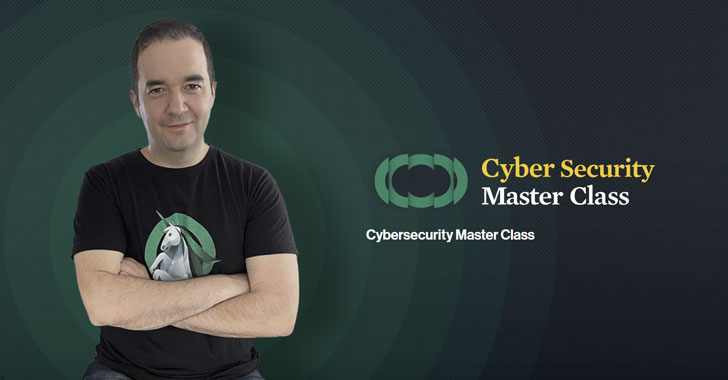Since cybersecurity is definitely an issue that’s here to stay,
I’ve just checked out the recently released first episodes of Cato
Networks Cybersecurity Master Class Series[1].
According to Cato, the series aims to teach and demonstrate
cybersecurity tools and best practices; provide research and
real-world case studies on cybersecurity; and bring the voices and
opinions of top cybersecurity thought-leaders. Designed for
security and IT professionals, C-level managers and security
experts, each session contains both theory and hands-on examples
about strategic, tactical, and operational issues on a wide range
of topics.
The classes are hosted by industry-recognized cybersecurity
researcher and keynote speaker, Etay Maor, who is also Senior
Director of Security Strategy at Cato. Four out of the planned
annual 8-10 episodes are currently available online.
- Episode 1, entitled How (and Why) to Apply OSINT to Protect your
Enterprise[2] takes an in-depth look
at our era of data proliferation and oversharing – people sharing
too much information on social networks; PDF and Excel files with
sensitive data out in the open; and devices exposing open ports and
services. - The public availability of all this information, which has
grown with the increase of remote workforces since the start of
COVID-19, makes Opensource Intelligence (OSINT) a real threat, as
threat actors collect and identify data that can put businesses at
risk. - In addition to providing tips and tricks for a better
understanding of OSINT, this master class discusses how to apply
OSINT tools (including free tools) to protect users, processes, and
technologies; and how Google Hacking, Shodan and Censys can be used
to collect valuable data. - As low-risk, high-reward ransomware attacks dominate the cyber
threat landscape, the second episode Ransomware: Attackers, Defenders, and FBI’s
Perspective[3] is very relevant.
Exploring the history of ransomware attacks and the types of
extortions used, it also offers important information on how to
operate security frameworks such as MITRE ATT&CK. And there are
some fascinating FBI insights from guest speaker, SSA Doug Domin of
the Boston FBI Criminal Cybersquad, as well as tips from ransomware
groups themselves on how to avoid attacks! - We’re probably all aware of the fact that deepfake technology
is becoming more accessible, with attacks ranging from faking a
video for ransom, to actual fraudulent transactions and national
security incidents. In fact, the FBI recently released a warning
that deepfake attacks against organizations are an imminent threat.
Master class episode 3, entitled From Disinformation to Deepfake[4], provides an
understanding of the different forms of information manipulation,
such as voice synthesis, face swapping and puppet mastering. - Guest presenter Raymond Lee, CEO of FakeNet.AI[5], provides some great
examples and techniques on how to identify and mitigate deepfake
threats, as he reviews different forms of information manipulation
and levels of deepfake (from cheap fakes to full-on fusion), and
types of attacks using deepfake technology. - Finally, did you know that the White House recently released an
executive order (EO) on improving US cybersecurity? Describing the
various agencies and infrastructures deemed critical for nation
security, the EO claims that “critical infrastructure” doesn’t
refer only to power plants, water facilities and military systems,
but also to the many digital systems on which the nation
relies. - With cybersecurity incidents targeting critical infrastructures
– from food manufacturers, to pipelines and government electronic
healthcare systems – and supply chain attacks on the rise, the
fourth episode, Supply Chain Attacks & Critical
Infrastructure: CISA’s Approach to Resiliency[6]
offers an opportunity to understand whether we’re part of a
critical system and what the government is doing to protect
this. - Ron Ford, Cyber Security Advisor at CISA/DHS (Cybersecurity and
Infrastructure Security Agency/Department of Homeland Security),
presents CISA’s mission and cybersecurity advisor program. Together
with Etay Maor, they discuss critical infrastructure and supply
chain attacks; scoping cybersecurity assessments – from strategic
to technical; and the DHS “Misconceptions vs. Reality” for securing
infrastructures.
So, is your data safe? While I can’t answer
that for you, I can definitely recommend these master classes,
which offer refreshing and enriching discussions on how to deal
with real-world security topics, as well as important insights and
practical tips from industry leaders and very cool guest speakers.
I’m already looking forward to the next episode, in which I
understand they are going to be hosting the CISO of Delta Airlines.
Enjoy!
References
- ^
Cybersecurity Master Class Series
(www.catonetworks.com) - ^
How (and
Why) to Apply OSINT to Protect your Enterprise
(catonetworks.easywebinar.live) - ^
Ransomware: Attackers, Defenders, and
FBI’s Perspective
(catonetworks.easywebinar.live) - ^
From
Disinformation to Deepfake
(catonetworks.easywebinar.live) - ^
FakeNet.AI
(www.fakenetai.com) - ^
Supply
Chain Attacks & Critical Infrastructure: CISA’s Approach to
Resiliency (catonetworks.easywebinar.live)
Read more http://feedproxy.google.com/~r/TheHackersNews/~3/7WUQ3X57JQQ/is-your-data-safe-check-out-some.html
